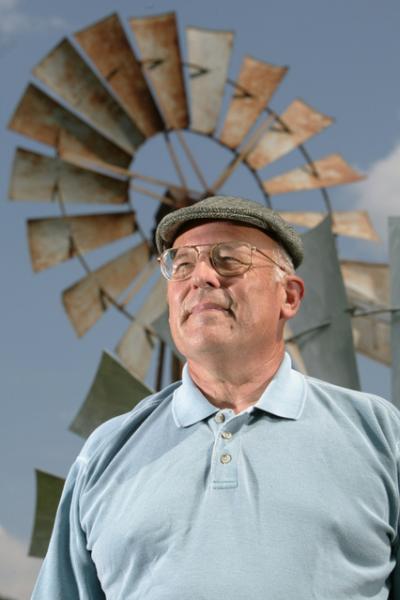
The green energy movement has changed the face of the Great Plains — dotting its hillsides with windmills and adorning its buildings with solar panels.
These topics have never been more important with climate concerns and rising energy costs. But this reliance on the landscape for power isn't exactly new. For decades people in the region have been using the renewable power of the wind to survive and prosper.
In a talk at 3:30 p.m. Sept. 18 at the Great Plains Art Museum, 1155 Q St., T. Lindsay Baker will speak about how wind power transformed Plains agriculture. Baker is W.K. Gordon Endowed Chair of Southwestern History and director of the W.K. Gordon Center for the Industrial History of Texas at Tarleton State University.
His lecture, "How the Wind Did Human Work on the Farm," will describe how the windmill became a Plains icon. He will cover how Plains residents pumped water, ground grain, sawed firewood, ran machine shops and generated their own electricity using the free power of the wind. Baker will demonstrate how harnessing wind made modern industrialization and agriculture possible on the Great Plains.
Presented by the University of Nebraska's Center for Great Plains Studies, the lecture is the first Paul A. Olson Seminar of the fall semester. The seminar is free and open to the public and is funded in part by the Humanities Nebraska and the Nebraska Cultural Endowment. For more information, go to http://www.unl.edu/plains.
Upcoming Paul A. Olson Seminars in Great Plains Studies:
• Oct. 22, 3:30 p.m.: "Architecture at a Crossroad" with Bernard Flaman, conservation architect and member of the Royal Architectural Institute of Canada. Flaman won 2014's Great Plains Distinguished Book Prize.
• Nov. 12, 3:30 p.m.: "Local Food on the Great Plains" features a panel of experts from the local food movement, who will talk about the future local food and the challenges the Great Plains faces as the movement grows. Speakers will be accompanied by several local food producers who will sample food items and provide information about their operations.
— Katie Nieland, Center for Great Plains Studies